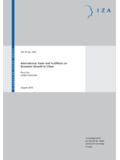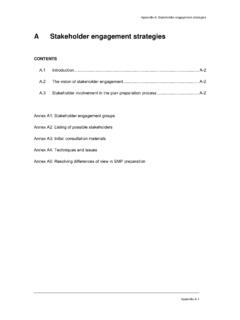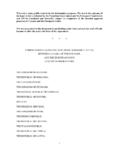Transcription of Systematic screening for active tuberculosis
1 Systematic screening for active tuberculosis Principles and recommendations 1 1 i i Systematic screening for active tuberculosis Principles and recommendations ii WHO Library Cataloguing-in-Publication Data Systematic screening for active tuberculosis : principles and recommendations. , Multidrug-Resistant - diagnosis. , Multidrug-Resistant - epidemiology. Health Organization. ISBN 978 92 4 154860 1 (NLM classification: WF 220) World Health Organization 2013 All rights reserved. Publications of the World Health Organization are available on the WHO web site ( ) or can be purchased from WHO Press, World Health Organization, 20 Avenue Appia, 1211 Geneva 27, Switzerland (tel.)
2 : +41 22 791 3264; fax: +41 22 791 4857; e-mail: Requests for permission to reproduce or translate WHO publications whether for sale or for non-commercial distribution should be addressed to WHO Press through the WHO web site ). The designations employed and the presentation of the material in this publication do not imply the expression of any opinion whatsoever on the part of the World Health Organization concerning the legal status of any country, territory, city or area or of its authorities, or concerning the delimitation of its frontiers or boundaries. Dotted lines on maps represent approximate border lines for which there may not yet be full agreement. The mention of specific companies or of certain manufacturers products does not imply that they are endorsed or recommended by the World Health Organization in preference to others of a similar nature that are not mentioned.
3 Errors and omissions excepted, the names of proprietary products are distinguished by initial capital letters. All reasonable precautions have been taken by the World Health Organization to verify the information contained in this publication. However, the published material is being distributed without warranty of any kind, either expressed or implied. The responsibility for the interpretation and use of the material lies with the reader. In no event shall the World Health Organization be liable for damages arising from its use. Cover design by Dr Knut Lonnroth Cover image by Kapitza Images Printed by the WHO Document Production Services, Geneva, Switzerland WHO/HTM/ iii iii Contents Foreword 1 Acknowledgements 4 Executive summary 7 Abbreviations 17 Definitions 18 1.
4 Purpose of guideline and target audience 21 Purpose 21 Target audience 22 2. Definition of screening for active TB in risk groups 23 Systematic screening for active TB 23 Risk groups 24 3. Rationale and objectives of screening for active TB 26 Challenges to TB care and control 26 Objectives and goals of screening for active TB 29 4. Guideline development process 30 Scoping, Guideline Development Group and peer review 30 GRADE tables and Decision tables 31 Grading the recommendations 33 Proposed subsidiary guideline products and implementation plan 35 5. Summaries of the Systematic reviews 37 Review 1: Systematic review of the benefits of screening for active TB to communities and individuals 37 iv Review 2: Systematic review of the sensitivity and specificity of different screening tools and algorithms 44 Review 3: Systematic review of the number needed to screen in different risk groups 48 Review 4: Systematic review of the acceptability of screening 49 6.
5 Assessing TB screening against generic criteria for screening 52 7. Key principles for screening for active TB 57 8. Recommendations on risk groups to be screened for active TB 65 Strong recommendations 66 Conditional recommendations 71 9. Algorithms for screening and diagnosis 80 screening adults and children aged 10 years and older 80 screening children younger than 10 years 89 10. Monitoring and evaluation 91 Proposed indicators 91 Routines for recording and reporting 92 Programmatic evaluations 92 Monitoring time trends for reprioritization 92 Research 93 v v Annex I. GRADE summary table: benefits of screening for tuberculosis , all risk groups combined 94 Annex II.
6 GRADE summary tables: sensitivity and specificity of screening tools for tuberculosis 103 Annex III. Flow charts of algorithms for screening and diagnosing tuberculosis in adults with modelled yields and predictive values 111 Annex IV. Guideline Development Group, WHO secretariat and peer reviewers 123 Supporting material available at : Systematic reviews GRADE summary tables: benefits of screening , by risk group Decision tables Modelled yield of different algorithms for screening and diagnosis Report of the scoping meeting, including PICO questions vi 1 1 Foreword Globally, tuberculosis (TB) is a leading cause of death1 and a major public-health Despite dramatic improvements made since the 1990s in providing access to high-quality TB services,3 many people with TB remain undiagnosed or are diagnosed only after long delays.
7 The high burden of undiagnosed TB causes much suffering and economic hardship, and sustains transmission. During the past few years, there has been an intensified discussion about using active case-finding, or screening , as a possible complement to the predominant approach of passive case-finding . The primary objective of screening is to ensure that active TB is detected early to reduce the risk of poor disease outcomes and the adverse social and economic consequences of the disease, as well as help reduce TB transmission. There have been calls to revisit the experiences of TB screening campaigns that were widely applied in Europe and North America in the mid-20th century, as well as more recent experiences with TB screening in countries with a high burden of the disease, and to assess their possible relevance for TB care and prevention in the 21st century.
8 In response, following a thorough review of available evidence WHO has developed guidelines on screening for active TB. The review suggests that screening , if done in the right way and targeting the right people, may reduce suffering and death. However the review also highlights several reasons to be cautious. As discussed in detail in this document, there is a need to balance potential benefits against the risks and costs of screening ; this conclusion is mirrored by the history of TB screening . In 1974, after reviewing the results of several decades of TB screening , the ninth report by WHO s Expert Committee on tuberculosis recommended that the policy of indiscriminate tuberculosis case-finding by mobile mass radiography should now be abandoned.
9 4 Evidence demonstrating the inefficiency of mass screening had mounted, mainly from assessments of populations with a low prevalence of TB and good access to high-quality 2 health services. Mass radiography was expensive, and seemed to add little to what could be achieved through passive case-finding in those ,6,7 Community screening was deemed inappropriate in low-income settings because basic diagnostic and treatment services were not widely ,9 WHO has since advised against mass screening . However, there was never an explicit recommendation made against screening as such, and it was never abandoned. Indiscriminate is a key word in this rare negative WHO recommendation from 1974, and in fact the report recommended that screening be continued for selected risk groups, such as close contacts of people with TB and immigrants from areas with a high prevalence of the An extensive review of screening experiences in Canada, the former Czechoslovakia and the Netherlands during the 1950s and 1960s, which underpinned WHO s recommendation, concluded that.
10 Radiography might be a more efficient instrument in tuberculosis control, provided that its indiscriminate mass use is replaced by a discriminate one. 5 Indeed, screening specific risk groups has been part of the Stop TB strategy for many years, namely for people living with HIV10 and household contacts of people with WHO also has guidelines on diagnosing and managing TB in prison populations,12 in refugees13 and in people with diabetes,14 although all of these guidelines contain insufficient advice on how to screen for active TB. Many countries have implemented screening in these risk groups and others, especially low-burden countries that have concentrated epidemics. However during the past few years screening has been implemented in high-burden countries that are striving to close the case-detection gap and reduce the delays in diagnosis that remain a challenge despite scaling up and decentralizing diagnostic and treatment services.












